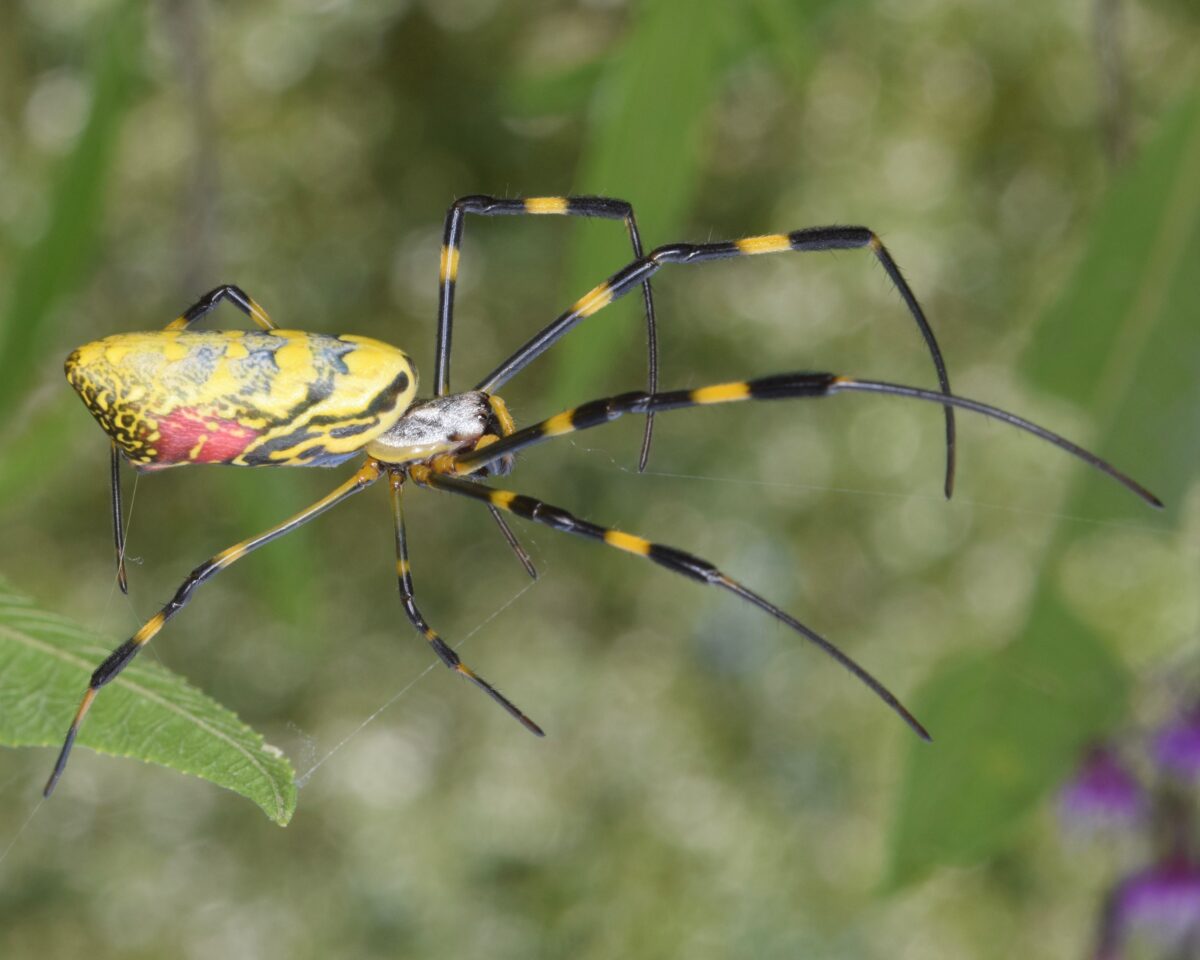Joro spiders don’t fly in the traditional sense, but they do utilize a method called “ballooning” to travel long distances. This involves releasing silk threads into the air, which catch the wind and carry them aloft.
While this is not technically flying, it does allow them to cover vast distances and reach new areas. This method is more common in young spiders, as they are lighter and easier to carry by the wind.
So, while Joro spiders don’t have wings or flap their legs to fly, they can still travel through the air using silk and wind currents.
The Joro spider, known scientifically as Trichonephila clavata, is a captivating species of orb-weaver spider that has garnered significant attention due to its vibrant coloration and impressive size. Native to East Asia, particularly Japan, Korea, China, and Taiwan, the Joro spider has recently been spotted in the United States, sparking interest and concern among researchers and the general public alike. This article explores various aspects of the Joro spider, from its biological characteristics to its ecological impact, health benefits, and potential intake limits.
What is the Joro Spider?
The Joro spider is an orb-weaver spider belonging to the Araneidae family. It is notable for its striking appearance, with females displaying vivid yellow and blue markings on their abdomen and long, banded legs. Males are significantly smaller and less colorful. The spider’s web, which can span several meters in diameter, is known for its golden silk, which is both strong and sticky, making it an effective trap for a variety of insects.
When was the Joro Spider First Discovered?
The Joro spider was first described scientifically in the 19th century by entomologists studying the diverse arachnid fauna of East Asia. However, its presence in the United States is a relatively recent phenomenon. The first confirmed sighting in the U.S. occurred in Georgia in 2014. Since then, the spider has been expanding its range, likely facilitated by global trade and climate conditions favorable to its survival and reproduction.
Where is the Joro Spider Found?
Originally from East Asia, the Joro spider has adapted well to various environments. In its native range, it inhabits forests, gardens, and urban areas. In the United States, it has been primarily found in the southeastern states, particularly in Georgia and neighboring regions. The spider prefers warm climates with ample vegetation, which provides both a habitat and a steady supply of prey.
Who is Studying the Joro Spider?
Research on the Joro spider is conducted by arachnologists, entomologists, and ecologists. Institutions such as the University of Georgia have been at the forefront of studying its ecological impact and behavioral patterns. Additionally, conservationists and environmental scientists are monitoring its spread to understand how it interacts with native species and ecosystems.
Why is the Joro Spider Significant?
The Joro spider is significant for several reasons. Ecologically, it plays a role in controlling insect populations, as its diet consists primarily of pests such as mosquitoes and flies. Its spread to new regions raises questions about potential impacts on local biodiversity and ecosystems. From a scientific perspective, its unique silk properties and adaptability make it a subject of interest for material science and biology.
Whose Environment is Affected by the Joro Spider?
The introduction of the Joro spider to non-native environments, particularly in the southeastern United States, has implications for local ecosystems. Native spiders and other predatory insects may face competition for resources. There is also concern about the potential impact on pollinators and other beneficial insects. Monitoring and research are essential to understand and mitigate any negative effects on native species and habitats.
Unique Facets of the Joro Spider
Coloration and Size
One of the most striking features of the Joro spider is its coloration. Females are particularly colorful, with bright yellow and blue markings that serve both as camouflage and a warning to potential predators. Their large size, with body lengths of up to 25 millimeters and leg spans reaching 100 millimeters, makes them one of the more visually impressive spiders.
Web Structure
The web of the Joro spider is equally fascinating. Its silk has a distinct golden hue, which gives the web a unique appearance. The web is not only large but also highly durable and sticky, capable of capturing a variety of flying insects. Researchers are studying the properties of Joro spider silk for potential applications in materials science, given its strength and elasticity.
Behavior and Diet
Joro spiders are primarily solitary and spend most of their time on their webs. They are passive hunters, relying on their webs to trap prey. Their diet includes a wide range of insects, which they immobilize with venom before consumption. Despite their intimidating appearance, Joro spiders are not aggressive toward humans and are unlikely to bite unless provoked.
Health Benefits and Risks
Potential Health Benefits
While the idea of consuming spiders might seem unconventional, there is a tradition in some cultures of using spiders for medicinal purposes. Spider venom has been studied for its potential therapeutic properties, including pain relief and antibacterial effects. The proteins and peptides in spider venom are of particular interest for developing new medical treatments.
Risks and Intake Limits
However, it is important to exercise caution. The venom of the Joro spider, while not lethal to humans, can cause allergic reactions in sensitive individuals. It is not advisable to handle or consume Joro spiders without proper knowledge and preparation. Additionally, the ecological impact of consuming or collecting Joro spiders from the wild could disrupt local populations and ecosystems.
How to Coexist with the Joro Spider
Given the Joro spider’s presence in various regions, understanding how to coexist with them is crucial. For most people, the best approach is to appreciate their ecological role from a distance. If Joro spiders are found in residential areas, it’s generally best to leave them undisturbed, as they help control pest populations. If removal is necessary, it’s recommended to use humane methods, such as relocating them to a suitable habitat.
Conclusion
The Joro spider is a fascinating arachnid with unique biological and ecological characteristics. Its striking appearance, impressive web-building skills, and role in controlling insect populations make it a subject of significant interest. While its introduction to new environments like the southeastern United States raises important ecological questions, ongoing research and monitoring will help us understand and manage its impact. Whether admired for its beauty or studied for its scientific potential, the Joro spider exemplifies the complexity and wonder of the natural world.











